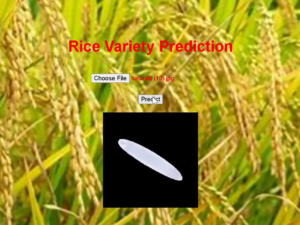No products in the cart.
Python AI/ML Based Projects
Signature Verification Using Python
Availability:
1 in stock
Signature Verification Using Python
Signature Verification using Python is a smart way to authenticate handwritten signatures by comparing them digitally. The system checks whether a given signature matches a stored one, identifying it as genuine or forged.
Using libraries like OpenCV, the process begins with image preprocessing (grayscale conversion, thresholding, contour detection) to extract important signature features. These features include shape, stroke direction, and texture.
For classification, machine learning models like SVM or KNN are used, or advanced systems can employ Convolutional Neural Networks (CNNs) with libraries such as TensorFlow or PyTorch.
This technology is useful in banking, document verification, and legal sectors, where security and accuracy are critical. Signature verification systems reduce human error and allow for fast, automated processing.
Python’s flexibility and rich ecosystem make it ideal for building powerful signature verification applications, even with limited hardware and resources.
₹7,670.00 ₹8,850.00 (Incl. GST) Up to 20% Off
1 in stock
Signature Verification Using Python
Signature Verification is a biometric process used to authenticate a person’s identity based on their handwritten signature. With Python, this process can be implemented using image processing and machine learning techniques to determine whether two signatures are from the same person (genuine) or not (forged).
The system works by taking two signature images — a reference (original) and a test signature — and extracting important features such as shape, orientation, pressure, and stroke patterns. Libraries like OpenCV are used for image preprocessing (grayscale conversion, noise reduction, thresholding, and contour detection), while machine learning models or deep learning (CNNs) are used for classification.
Key steps in the process:
Image Preprocessing using OpenCV
Feature Extraction (pixel density, angle, contours, etc.)
Model Training using classifiers (SVM, KNN, or Neural Networks)
Comparison and Result Output (Genuine/Forged)
For deep learning approaches, Convolutional Neural Networks (CNNs) are trained on datasets like GPDS, CEDAR, or custom datasets to achieve higher accuracy. Frameworks like TensorFlow or PyTorch can be used for this.
Applications of signature verification include banking, legal document validation, access control, and forensic analysis. Python’s rich ecosystem of libraries makes it a powerful tool for developing such systems quickly and efficiently.
By automating signature verification, this system enhances security, reduces manual errors, and supports digital transformation in authentication processes.






There are no reviews yet.